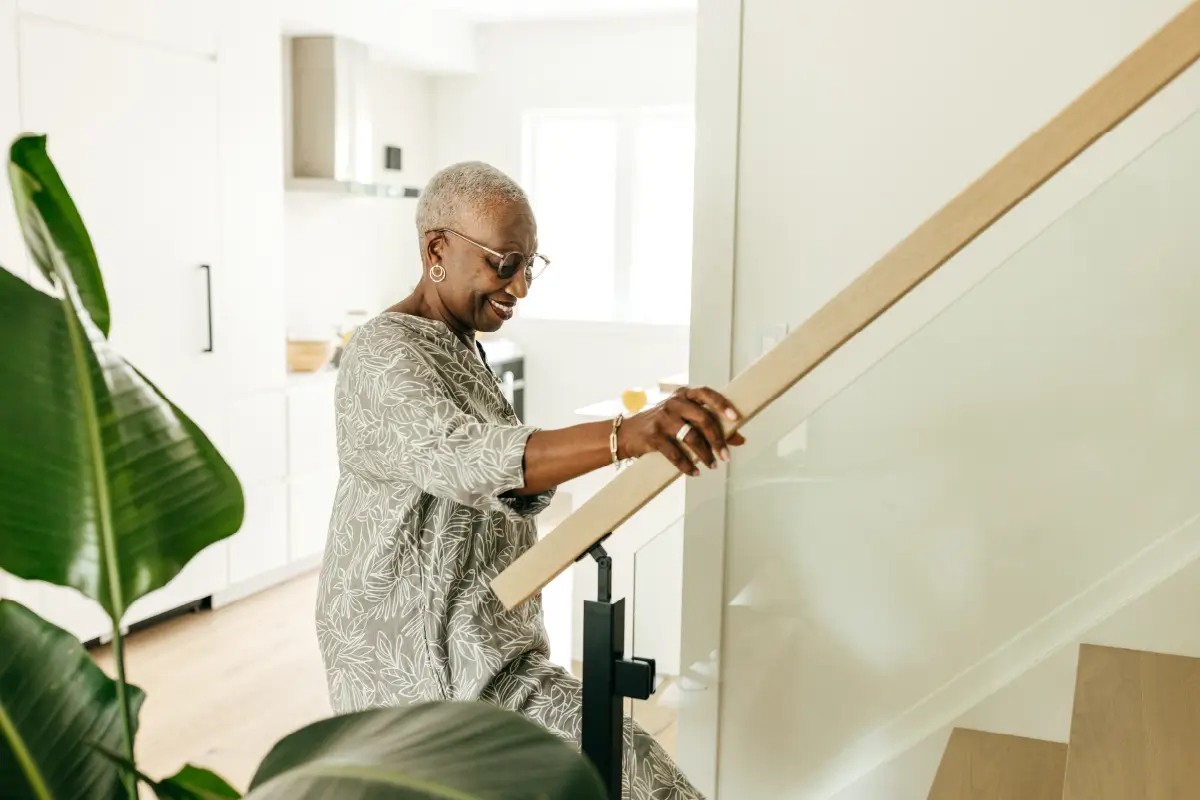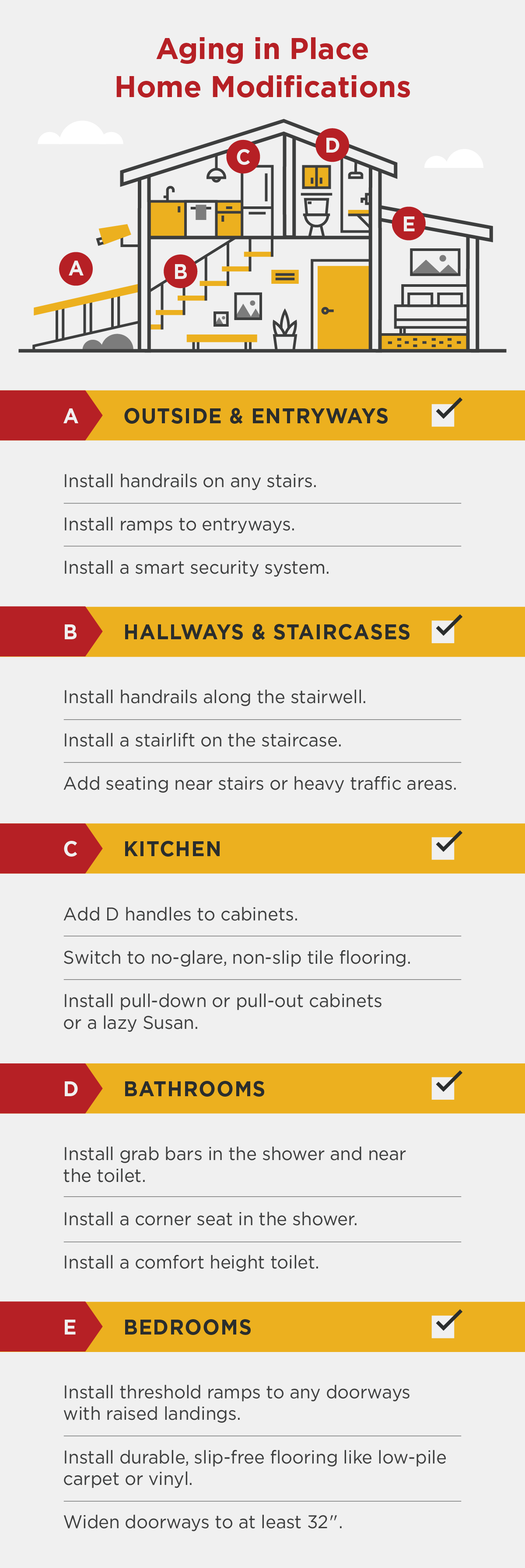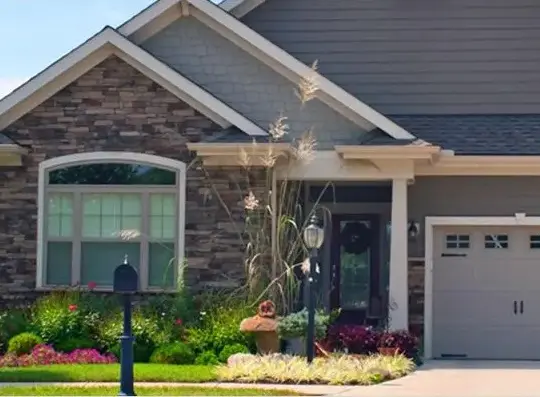
Comfort is a top priority as we age, especially at home. According to AAG’s Importance of Home Survey, 92% of older adults say they’d prefer to live at home instead of assisted living facilities as they enter their golden years. However, another survey from U.S. News & World Report found that 19% of homes aren’t equipped for aging in place.
To create a comfortable and safe home environment that allows older individuals to maintain a sense of independence, a solid home modification plan is crucial.
Whether you’re preparing for your older years or helping your aging parents, our guide covers 13 important aging-in-place home modifications to prioritize and ensure comfort for years to come.

1. Replace Cabinet and Door Handles
A quick and easy upgrade is replacing cabinet hardware and doorknobs with D handles. Traditional knobs are difficult for people with arthritis to grasp firmly, and the twisting motion can sometimes be challenging.
D handles allow people to easily open and close their cabinets or doors, and the hardware can look just as stylish as any other handle. A small modification like this can keep life moving at a normal pace for anyone who’s feeling a little stiffer with age.
2. Install Grab Bars and Handrails
Typically installed in the shower or near the toilet, grab bars are simple devices that make a big difference. They help with stability when moving around and offer support when you need a moment of rest.
Proper grab bar installation is needed to ensure they can safely bear the weight of the person grabbing hold, so finding an expert handyman for the job is important. Not only can a professional safely install grab bars but they can also make them visually appealing if you’re worried about aesthetics.
In addition to adding grab bars, handrails are also an essential aging in place home modification. Install handrails along any stairwells both inside and outside your home so you can safely maneuver up and down the steps.
3. Set Up a Stairlift
Handrails make going up the stairs easier, but for older adults using a wheelchair or who have trouble walking up the stairs, installing a stairlift inside the home may be a better solution.
Stairlifts are a great option for safely getting to another floor of your home and can provide a sense of independence for those with limited mobility. However, it’s important to note that stairlifts have a joystick and other controls, so they’re best suited for those who don’t need additional assistance and have the dexterity to maneuver the buttons.
4. Install Outdoor and Indoor Ramps
Adding outdoor ramps to your home’s entryways makes it easy for those who use wheelchairs or walkers to enter the home. Even if you’re not using these assistive devices, ramps are often a more comfortable and safer alternative to stairs for aging adults.
Indoor threshold ramps are also great for wheelchair users, as they allow you to smoothly transition between rooms or doorways with small steps or raised landings.
5. Upgrade the Shower
Aside from grab bars, installing a corner seat or bench in the shower offers another layer of safety. The seating provides a place to sit and relax for anyone uneasy on their feet. You should also consider upgrading your showerhead to a handheld one. A wand attachment makes it easy to rinse soap from hard-to-reach places and comes with a variety of settings to make showering comfortable and enjoyable.
Here are some additional tips for making sure your shower is safe and accessible:
- Remove all clutter—like empty shampoo bottles or bars of soap—from the floor so you don’t trip over them.
- Use non-skid shower mats to prevent slipping and falling in the shower.
- Install a walk-in shower when renovating your bathroom so you don’t have to climb over the side of a bathtub.
6. Add Seating Near Stairs
Walking up the stairs can be tiring and hard on sore joints, and sometimes you just need a rest. Consider adding seating near the stairs so you (or your parents) can catch your breath and rest in areas that require extra activity. For example, a bench at the staircase landing can provide a great resting point halfway up. Providing the opportunity to rest and recover may help prevent a serious trip or fall.
7. Raise the Toilet Seats
Raising the toilet seat can help prevent accidents and straining in the bathroom. According to The National Institute on Aging, more than 1 in 4 people age 65 or older fall each year, with many of those accidents happening in the bathroom.
A comfort height toilet places less stress on the joints and, when combined with grab bars, can provide security, safety, and comfort in an area of the home prone to slips and falls.
8. Make the Kitchen Slip-Free
According to the National Safety Council, the leading cause of accidental death in the home after the age of 65 is falling. Aside from the bathroom, many falls occur in the kitchen due to spills on the floor, loose rugs or mats, and heavy clutter.
Consider installing no-glare, non-slip tile as it’s safe, easy to maintain, and simple to clean. You can also use a non-slip anti-fatigue mat, which provides a safe and comfortable surface to walk on and catch spills.
9. Widen Doorways
Narrow doorways are difficult to get through for wheelchair users, those using walkers, and anyone—such as your family or a nurse—who may be assisting with day-to-day life at home.
ADA compliance standards indicate a minimum door width of 32 inches for wheelchairs and a maximum width of 48 inches. This home modification requires expertise, so if you’re looking for door repair services, our team of professional handymen can help.
While you’re widening the doorway, consider lowering light switches that may have to be rerouted anyway. Lowering light switches to below the standard 48 inches makes them easier for wheelchair users to reach.
10. Install Pull-Down and Pull-Out Shelves
Installing shelves, especially pull-down and pull-out shelves, in the kitchen and bathroom is a great home modification for aging in place.
Pull-down shelves can be added to high cabinets to ease accessibility issues for people who use wheelchairs, while pull-out shelves in lower cabinets reduce the need to bend over. Another great modification is installing a lazy Susan in a corner cabinet, which makes it easier to reach items without straining.
11. Install Smart Home Technology
Studies have found that older adults feel safer, healthier, more independent, and have greater mobility when using assistive technology like smart home devices in their homes. Installing smart home technology can help improve accessibility for older adults and give caregivers and family members peace of mind.
Consider installing the following smart home devices for aging in place:
- Smart lighting: This makes it easier for those with limited mobility or vision impairments to control the lighting by voice, motion, or predetermined settings.
- Smart thermostats: These help keep your home comfortable by automatically adjusting the temperature.
- Smart home monitors: These can monitor movement and behavior by utilizing motion detectors or cameras to detect emergencies like falls.
- Smart security systems: These systems add a layer of safety, with cameras that monitor activity inside and outside the home.
12. Upgrade Faucets
Some kitchen and bathroom faucets include twist features, which can be hard for older adults to grip. Upgrading to touchless or single-lever faucets is a simple home modification that makes it easier for older adults to turn faucets on and off.
13. Install Appropriate Flooring
Proper flooring is a crucial home modification for aging in place, as it can help prevent slips and falls. Flooring should be slip-resistant, durable, and comfortable in all areas of the home.
Installing linoleum flooring, for example, is a great option for those looking for affordable, non-slip, durable, and stylish flooring. Low-pile carpeting, vinyl, and rubber flooring are also good flooring options.
Get Professional Help for Aging in Place Home Modifications
Whether you and your parents are separated by two blocks or two time zones or you’re looking to get ahead with your own renovations, it’s important to find a reliable handyman who can take care of any home improvement and maintenance needs. Your local Mr. Handyman® is ready to help.
Call or request service online to get started and see how we can help with any aging-in-place home modifications.
 Click to call
Click to call




